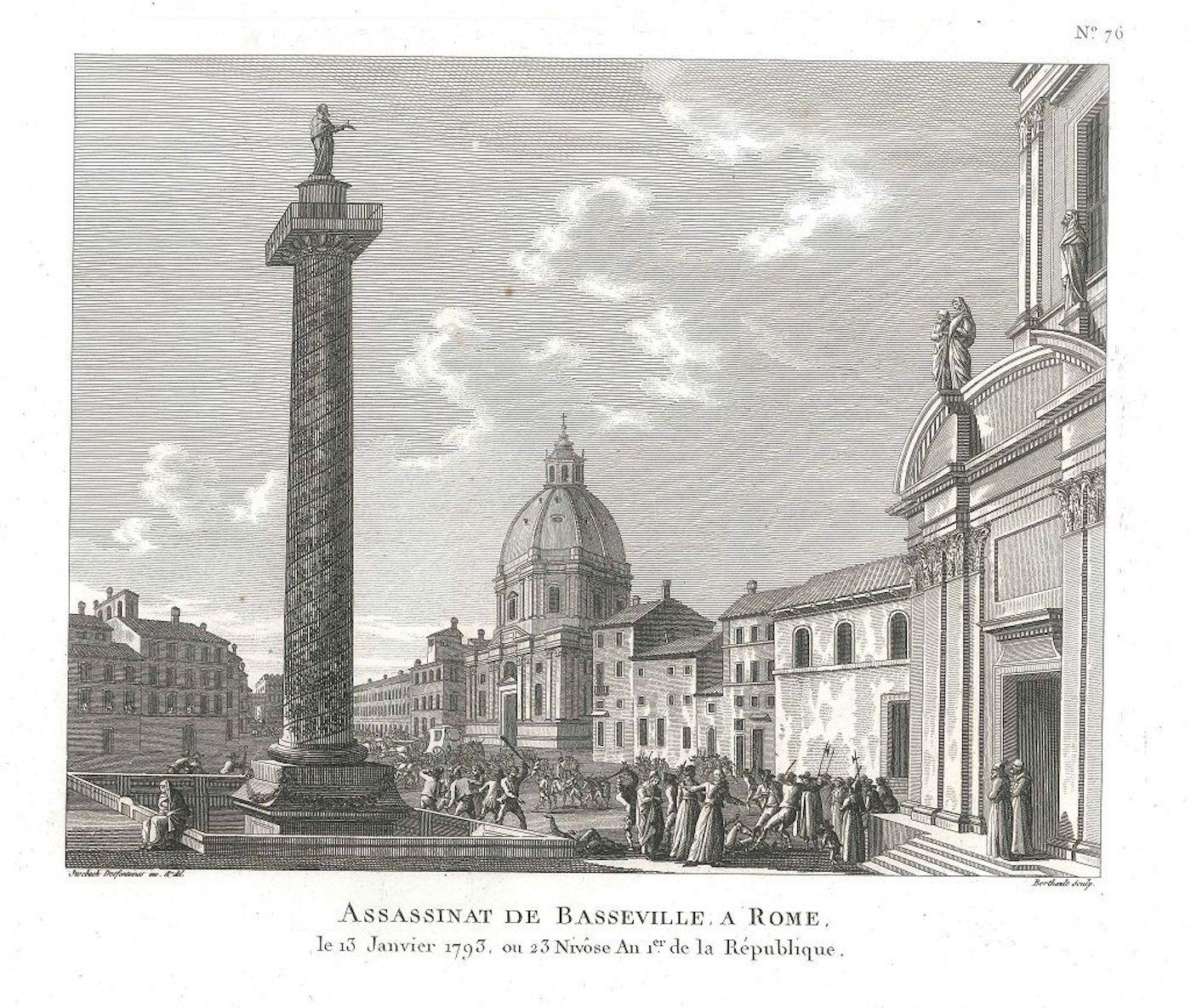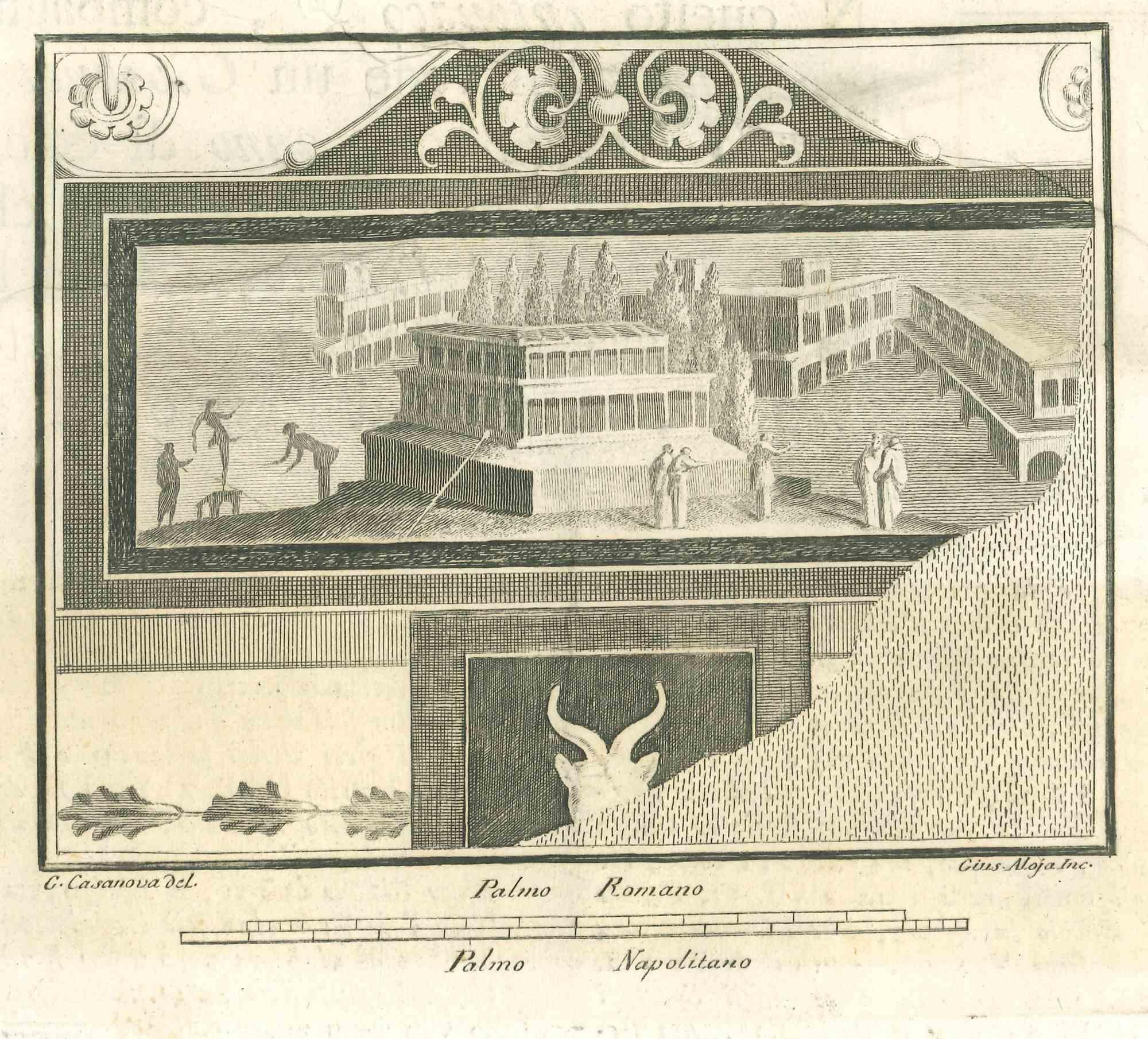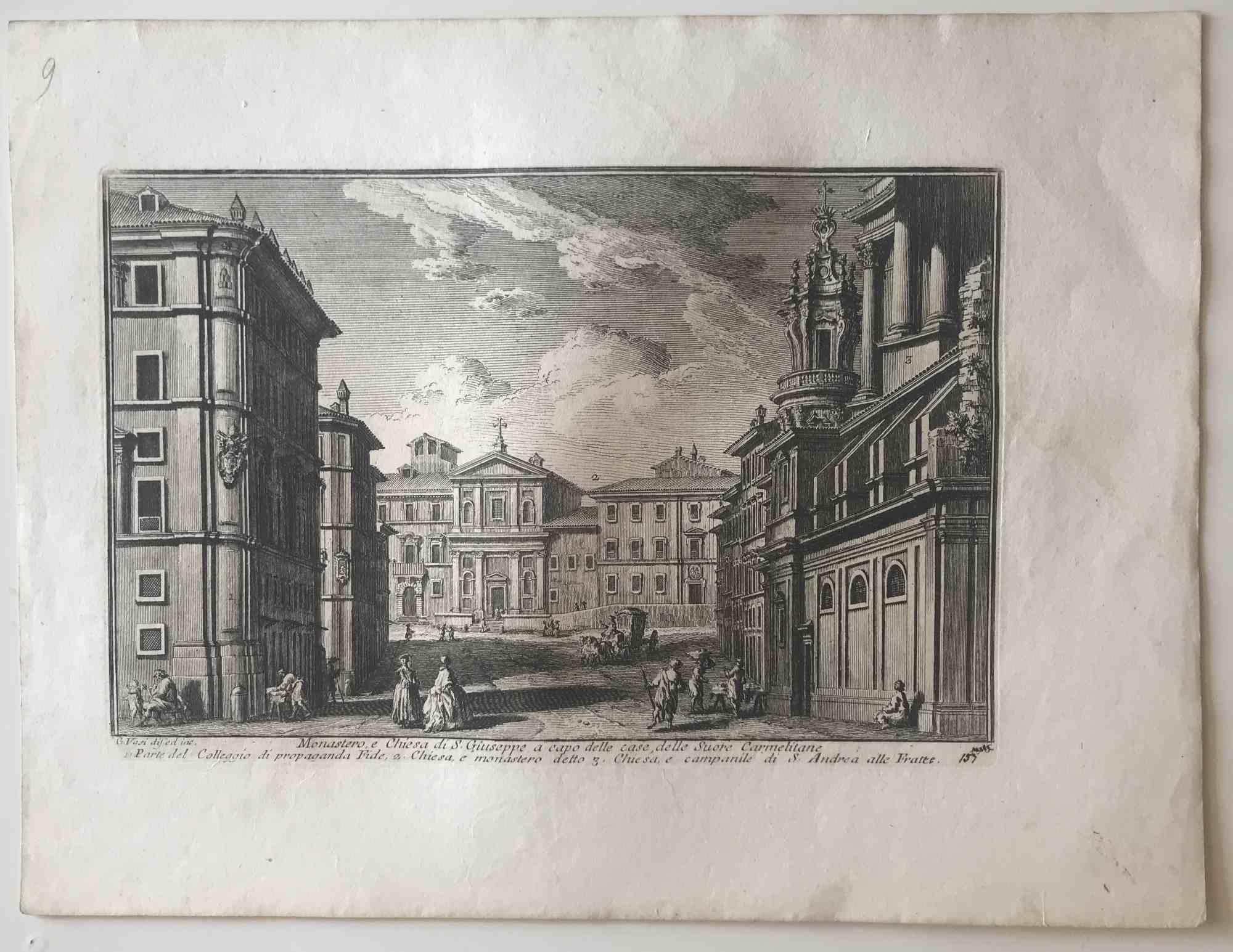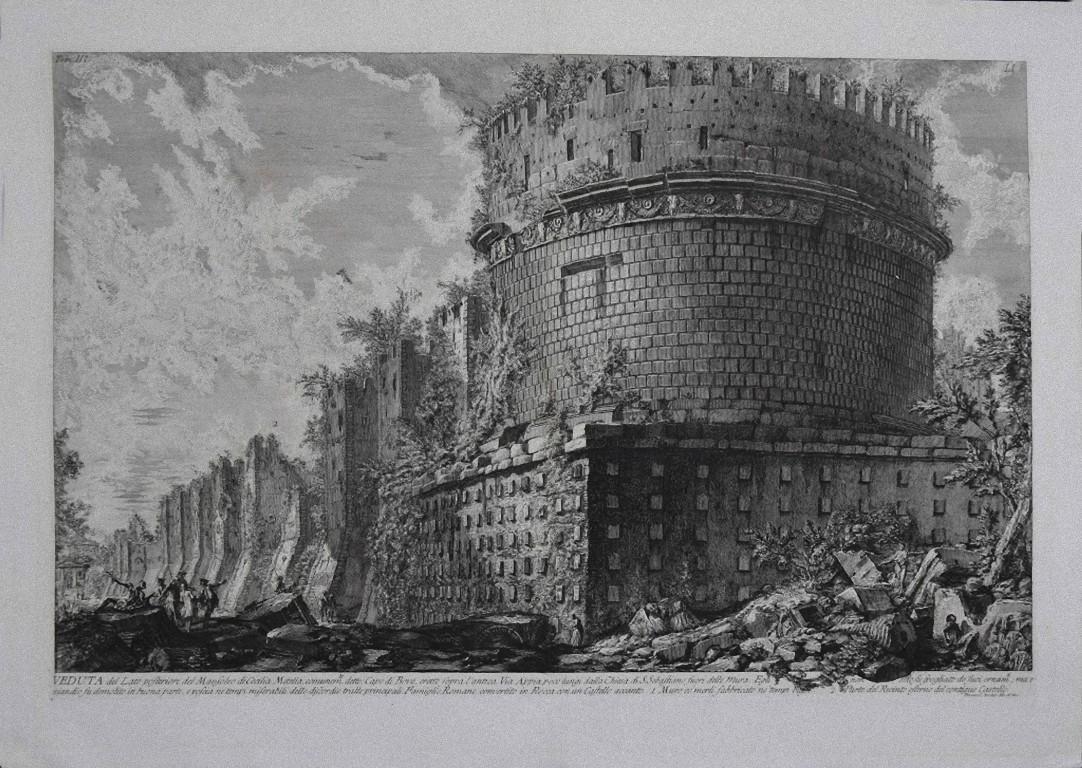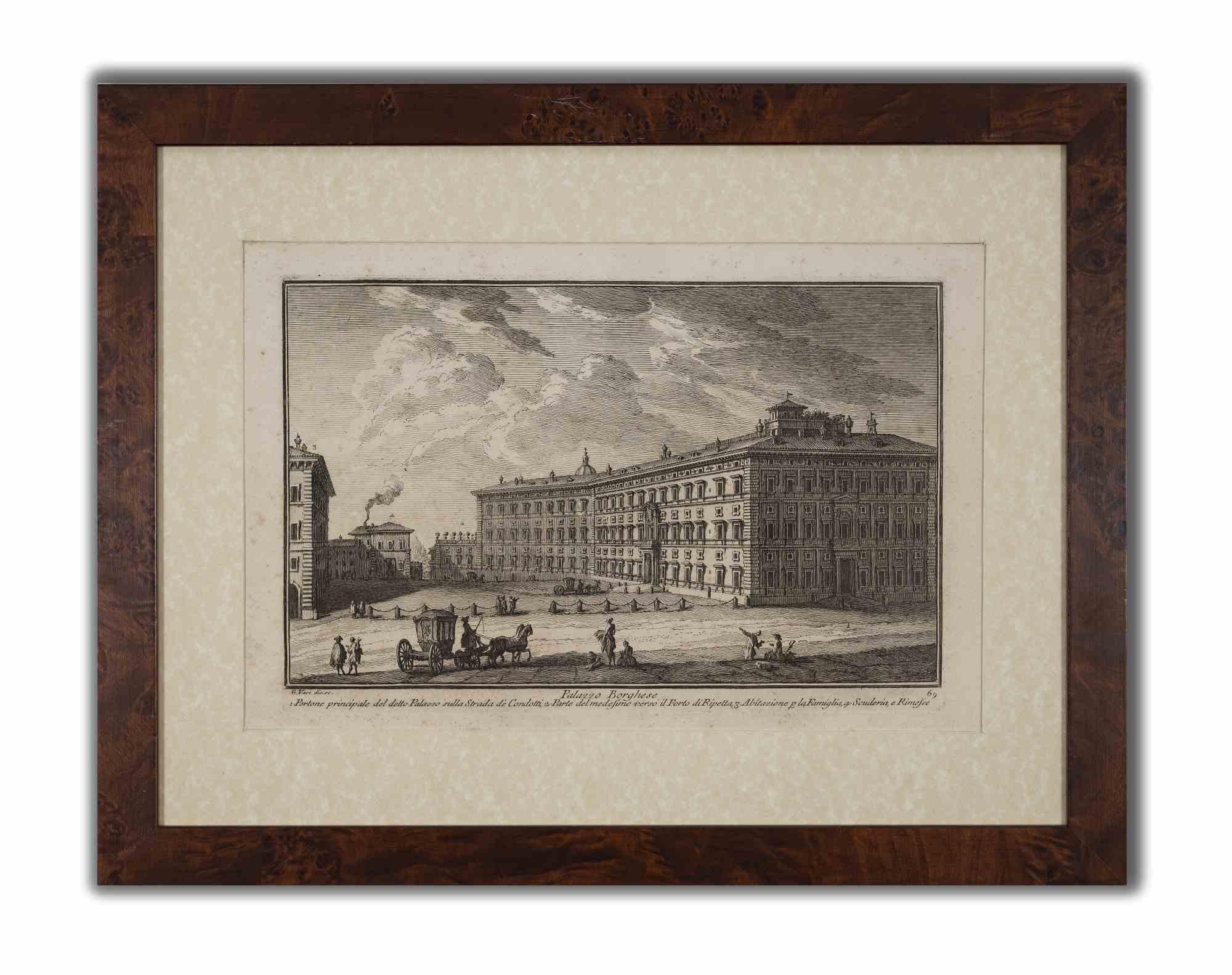Jacques CallotLa distribution des récompenses - Etching by Jacques Callot - 16331633
1633
About the Item
- Creator:Jacques Callot (1592 - 1635, French)
- Creation Year:1633
- Dimensions:Height: 3.55 in (9 cm)Width: 7.68 in (19.5 cm)Depth: 0.04 in (1 mm)
- Medium:
- Movement & Style:
- Period:1630-1639
- Condition:Insurance may be requested by customers as additional service, contact us for more information.
- Gallery Location:Roma, IT
- Reference Number:
Jacques Callot
Jacques Callot, at the age of 12 years old, he runs away in Italy with gypsies. Callot returned for the third time to Italy together with an embassy of Duke Henry II to the Holy See. In 1611, Callot entered the workshop of Tempesta, a famous Italian engraver, for three years. In 1614 Callot left Rome for Florence in the service of Cosimo II de Medici. Callot produced drawings and etchings that drew influence from Flemish art and Mannerist works in Roman churches. Callot’s career began in Florence in 1612 when he started work in the Medici court, where he was employed to make pictorial records of entertainments such as fairs and festivals and where he also drew and etched courtiers, beggars and other characters, excelling particularly at caricatures. Returning to his native France in the latter end of his career, Callot’s work became markedly soberer as he documented the horrors of the 30 years of war in his Miseries of War series, which would continue to influence the artistic representation of conflict social injustice into the 19th and 20th Centuries.
- ShippingRetrieving quote...Ships From: Rome, Italy
- Return PolicyA return for this item may be initiated within 14 days of delivery.
- Assassinat de Basseville à Rome - Original Etching by P.G. Berthault - 1793By Pierre Gabriel BerthaultLocated in Roma, ITAssassinat De Basseville à Rome is an original black and white etching realized by Pierre Gabriel Berthault, after Jacques François Joseph Swebach-Desfontaines in 1793. Title with caption on plate on the lower center: "Assassinat de Basseville, à Rome/ le 13 Janvier 1793, ou 23 Nivose An Ier de la République". Below the image on the lower margin, "Swebach Desfontaines onv. et del. / Berthault sculp." is etched on plate. This modern artwork is numbered "N. 76", because it is from the series Les Tableaux historiques de la Révolution française. As a matter of fact, Pierre-Gabriel Berthault is well-known for having engraved plates from this collection with the collaboration of the engraver Jean Duplessis-Bertaux. A work - hanging in the balance between news and history - with illustrations of salient or minimal events occurred during the French Revolution. As a celebration of the new ideals of brotherhood, justice, and equality, Les Tableaux immediately became a point of reference for journalism at the time. Of traditional cut, namely showing a view with many human figures, the engraving simplified the lines to be immediately readable for the general public. In our specific case, this original print represents the murder of Hugou de Bassville or Basseville (7 February, 1743 – 13 January, 1793), a French journalist and diplomatist, and protector of the radical Jacobins in Rome. In excellent conditions, except for a usual yellowing of the paper on the edges and a light trace of oxidations on the lower and right margins, beyond the marginal line of the matrix. Pierre-Gabriel Berthault (Saint-Maur-des-Fossés, 1737 - Paris, 1831) was a French master who made engravings from drawings by Jean-Claude Richard de Saint-Non (known as the Abbot of Saint-Non) and from paintings by Louis François Cassas. He depicted many views of Italy and created the collections Voyage à Naples and Voyage pittoresque de la Syrie, de la Palestine et de la basse-Egypte. Before the French Revolution, he was famous for being the author of the Vues intérieures de Paris and for tables with architectural elevations.Category
1790s Old Masters Landscape Prints
MaterialsEtching
- Seascapes With Monument and Figures - Etching by Giuseppe Aloja - 18th CenturyLocated in Roma, ITSeascapes With Monument and Figures is an Etching realized by Giuseppe Aloja (1783-1837). The etching belongs to the print suite “Antiquities of Herculaneum Exposed” (original titl...Category
18th Century Old Masters Figurative Prints
MaterialsEtching
- Landscape - Etching - 17th CenturyLocated in Roma, ITLandscape is an old master artwork realized by Artist of late 17th Century. Etching on paper. Includes frame 31.8 x 37 cmCategory
17th Century Old Masters Figurative Prints
MaterialsEtching
- Monastero e Chiesa di S.Giuseppe - Etching by G. Vasi - 18th centuryBy Giuseppe VasiLocated in Roma, ITMonastero e Chiesa di S.Giuseppe is an original etching of the Late 18th century realized by Giuseppe Vasi. Signed and titled on plate lower margin. Good conditions except for som...Category
Late 18th Century Old Masters Landscape Prints
MaterialsEtching
- View of Mausoleo of Cecilia Metella - Etching by G. B. Piranesi - 1773By Giovanni Battista PiranesiLocated in Roma, ITView of Mausoleo of Cecilia Metella is an original etching realized by the italian artist Giovanni Battista Piranesi in 1773. Precoius roman edition. Complete title on the lower ma...Category
1770s Old Masters Figurative Prints
MaterialsEtching
- Palazzo Borghese - Etching by Giuseppe Vasi - 1747By Giuseppe VasiLocated in Roma, ITPalazzo Borghese is original black and white etching realized by Giuseppe Vasi . Beautiful etching representing Palazzo Borghese in Rome. Signed and...Category
Mid-18th Century Old Masters Figurative Prints
MaterialsEtching
- The Great Landscapes II, (4th State)By Anthonie WaterlooLocated in Chicago, ILWatermark: Schellenkappe (Foolscap) Similar to Churchill no. 340Category
17th Century Old Masters Landscape Prints
MaterialsEtching
- The Great Landscapes VI (2nd State)By Anthonie WaterlooLocated in Chicago, ILWatermark: Wappen von Amsterdam mit NebenmarkeCategory
17th Century Old Masters Landscape Prints
MaterialsEtching
- Shere Mill PondBy Sir Francis Seymour Haden, R.A.Located in Missouri, MOShere Mill Pond, No. II (large plate). 1860. Etching and drypoint. Schneiderman 37.v/ix. 7 x 13 1/8 (sheet 10 3/4 x 16 3/8). This state is prior to publication in Études à l'Eau-Forte. Illustrated: Keppel The Golden Age of Engraving; Print Collector's Quarterly 1 (1911): 18; : Guichard, British Etchers, 1850-1940. A rich, brilliant proof with drypoint burr printed on white laid paper. Signed in pencil. ------------------------------------------------------------------------------------------- Shere Mill Pond, No. II was one of the most highly praised landscape prints of the etching revival. An impression was exhibited at the Royal Academy in 1861 under Haden’s pseudonym, H. Dean. Francis Seymour Haden used this anagram of his own name early in his career as an artist, in order to retain his anonymity and preserve his professional reputation as a surgeon. Biography: Sir Francis Seymour Haden (16 September 1818 - 1 June 1910), was an English surgeon, best known as an etcher. He was born in London, his father, Charles Thomas Haden, being a well-known doctor and lover of music. He was educated at Derby School, Christ's Hospital, and University College, London, and also studied at the Sorbonne, Paris, where he took his degree in 1840. He was admitted as a member of the College of Surgeons in London in 1842. In 1843-1844, with his friends Duval, Le Cannes and Colonel Guibout, he travelled in Italy and made his first sketches from nature. Haden attended no art school and had no art teachers, but between 1845 and 1848 he studied portfolios of prints belonging to a second-hand dealer named Love, who had a shop in Bunhill Row, the old Quaker quarter of London. Arranging the prints in chronological order, he studied the works of the great original engravers, Albrecht Dürer, Lucas van Leyden and Rembrandt. These studies, besides influencing his original work, led to his important monograph on the etched work of Rembrandt. By lecture and book, and with the aid of the memorable exhibition at the Burlington Fine Arts Club in 1877, he tried to give a true reflection of Rembrandt's work, giving a nobler idea of the master's mind by taking away from the list of his works many dull and unseemly plates that had long been included in the lists. His reasons were founded upon the results of a study of the master's works in chronological order, and are clearly expressed in his monograph, The Etched Work of Rembrandt critically reconsidered, privately printed in 1877, and in The Etched Work of Rembrandt True and False (1895). Haden's printmaking was invigorated by his much younger brother-in-law, James Whistler, at the Haden home in Sloane Street in 1855. A press was installed there and for a while Haden and Whistler collaborated on a series of etchings of the Thames. The relationship and project did not last. Haden followed the art of original etching with such vigour that he became not only the foremost British exponent of that art but brought about its revival in England. His strenuous efforts and perseverance, aided by the secretarial ability of Sir WR Drake, resulted in the foundation of the Royal Society of Painter-Etchers and Engravers. As president he ruled the society with a strong hand from its first beginnings in 1880. Notwithstanding his study of the old masters of his art, Haden's own plates were very individual, and are particularly noticeable for a fine original treatment of landscape subjects, free and open in line, clear and well divided in mass, and full of a noble and dignified style of his own. Even when working from a picture his personality dominates the plate, as for example in the large plate he etched after J.M.W. Turner's "Calais Pier," which is a classical example of what interpretative work can do in black and white. Of his original plates, more than 250 in number, one of the most notable was the large "Breaking up of the Agamemnon." An early plate, rare and most beautiful, is "Thames Fisherman". "Mytton Hall" is broad in treatment, and a fine rendering of a shady avenue of yew trees leading to an old manor-house in sunlight. "Sub Tegmine" was etched in Greenwich Park in 1859; and "Early Morning--Richmond", full of the poetry and freshness of the hour, was done, according to Haden, actually at sunrise. One of the rarest and most beautiful of his plates is "A By-Road in Tipperary"; "Combe Bottom" is another; and "Shere Mill Pond" (both the small study and the larger plate), "Sunset in Ireland," "Penton Hook," "Grim Spain" and "Evening Fishing, Longparish," are also notable examples of his genius. A catalogue of his works was begun by Sir William Drake and completed by Harrington in 1880. During later years Haden began to practise the sister art...Category
Late 19th Century Old Masters Landscape Prints
MaterialsEtching, Drypoint
- Veduta delle Antiche Sostruzioni, Vintage Cityscape Etching by Giovanni PiranesiBy Giovanni Battista PiranesiLocated in Long Island City, NYArtist: Giovanni Battista Piranesi, Italian (1720 - 1788) Title: Veduta delle Antiche Sostruzioni Portfolio: Vedute di Roma Year: 1776 Medium: Etching ...Category
1770s Old Masters Landscape Prints
MaterialsEtching
- 17th century etching black and white figurative landscape obelisk buildingsBy Jan Frans van Bloemen (Orizzonte)Located in Milwaukee, WI"Figures at the Obelisk" is an original etching by Jan Frans van Bloemen. It depicts two people conversing in front of a monument. Behind them, an expansive landscape sprawls. 9 1/4" x 6 3/4" art 21 3/4" x 19 3/8" frame Jan Frans van Bloemen (baptized 12 May 1662 - buried 13 June 1749) was a Flemish landscape painter mainly active in Rome. Here he was able to establish himself as the leading painter of views (vedute) of the Roman countryside depicted in the aesthetic of the classical landscape tradition. Van Bloemen predominantly painted classical landscapes, taking his inspiration from the Roman Campagna. His landscapes, with their recession through a series of planes, soft, warm lightning and classical and religious subject matter, drew on the examples of artists such as Claude Lorrain and Gaspard Dughet. His paintings are exquisitely imbued with that "difficult-to-define pastoral ambience" which helped to make him such a great painter in the eyes of his contemporaries. The technique and subjects of the work of Jan Frans van Bloemen are also related to painters such as Jan Asselijn, Thomas Wyck...Category
18th Century Old Masters Landscape Prints
MaterialsEtching
- "English Country Fisherman by the Cottage, " Original Etching by J. T. SmithBy John Thomas SmithLocated in Milwaukee, WI"English Country Fisherman by the Cottage" is an original etching by John Thomas Smith. The miniature etching features a country cottage with a thatc...Category
1790s Old Masters Landscape Prints
MaterialsPaper, Etching, Ink
